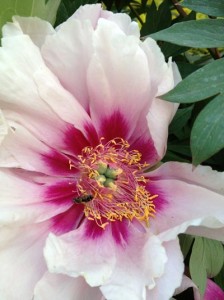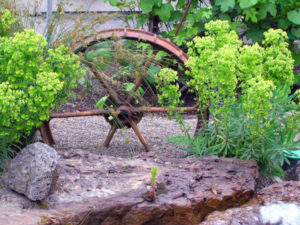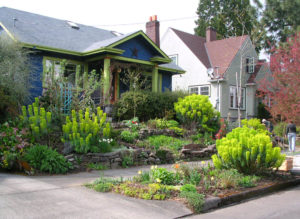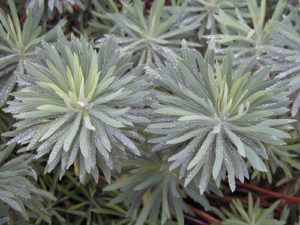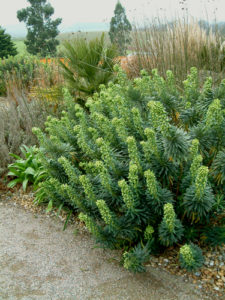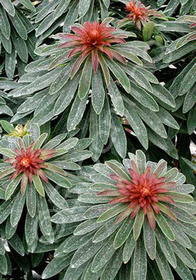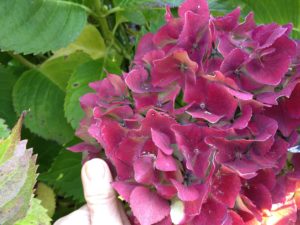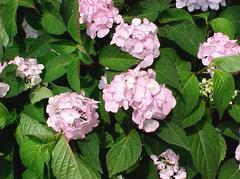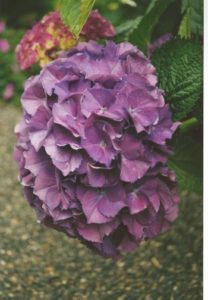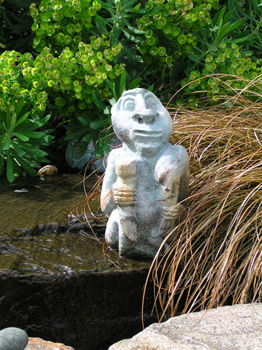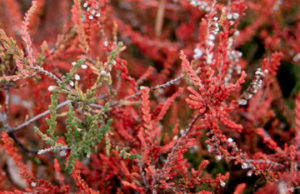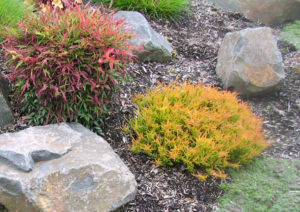Compact Burning Bush
The most popular variety of Euonymus alata ‘Compacta’ because people think it will be small, say 3′ x 3′. It is not the least bit small and easily grows into a beautiful small tree. The smallest variety on the market is called ‘Rudy Haag’ 5′ x 5′. Even the variety called ‘Pip Squeak’ is 6′ x 5′. If Burning Bush is not placed with room to grow, these shrubs get turned into ugly muffins by frustrated gardeners. If it is sheared properly, thinner at the top and wider at the bottom, this can be a very attractive hedge but it will need to be sheared two or three times a year. Ugh! Too much work for me.
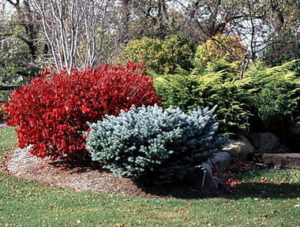 I love to use this shrub as a shree (part shrub, part small tree). A client of mine, Ruth in Scappoose has hers planted in full sun and pruned into small multi-stem trees. They are underplanted with a hot orange summer flowering Euphorbia which is a wow combination. These “shrees” have been in their location for over ten years and they are not irrigated at all. Other than having a professional pruning every year or three, this privacy planting is very low maintenance and simply stunning. The ridged and winged bare stems of the Burning Bush are attractive and add winter interest. To establish this plant, water it once a week, or twice in hot weather. Once established, it will thrive with once a week watering. As it ages in place it needs less and less water. A plus … The deer don’t bother this plant in Ruth’s garden.
I love to use this shrub as a shree (part shrub, part small tree). A client of mine, Ruth in Scappoose has hers planted in full sun and pruned into small multi-stem trees. They are underplanted with a hot orange summer flowering Euphorbia which is a wow combination. These “shrees” have been in their location for over ten years and they are not irrigated at all. Other than having a professional pruning every year or three, this privacy planting is very low maintenance and simply stunning. The ridged and winged bare stems of the Burning Bush are attractive and add winter interest. To establish this plant, water it once a week, or twice in hot weather. Once established, it will thrive with once a week watering. As it ages in place it needs less and less water. A plus … The deer don’t bother this plant in Ruth’s garden.
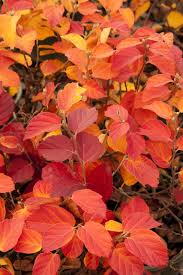
Fothergilla ‘Mt Airy’, (Bottlebrush) in full fall color.
Witch Alder (also called Bottlebrush)
This shrub has two seasons of wow, one is spring where the fragrance is heavenly, the bottle brush flowers are attractive in flower arrangements and if pruned properly, the shape of this “shree” will look good year round. The 2nd wow is the fall color.
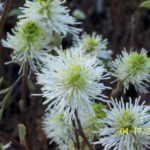
Fothergilla (BottleBrush) fragrant flowers on naked stems delight in spring
This plant, Fothergilla ‘Mt. Airy’ will need regular water until it has been in place for many years. Almost all plants, even those listed as drought tolerant, look better with some irrigation in our Pacific NW Mediterranean style summer. See fabulous colorful art made from these leaves!!!
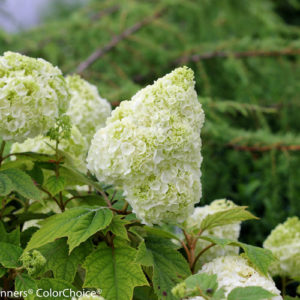
Hydrangea Quercifolia Oakleaf Hydrangea ‘Gatsby’s Moon’ is a new variety from Proven Winners.
Oakleaf Hydrangea
I’ve written about this plant many times but that’s because it’s so great. The full size plant may not fit in most landscapes but there are two semi dwarf plants that will. These plants have huge white conical flowers in mid- summer that fade to a nice pink. In fall the large and well textured leaf turn the most fabulous rich reds and stay on the plant well past Thanksgiving. These leaves always go in my Thanksgiving table centerpiece. Once the leaves fall, there is great rusty exfoliating bark on the stems that glow in the winter light.
Hydrangea quercifolia, Oakleaf Hydrangea ‘Sikes Dwarf’ and ‘Pee Wee’ are the two varieties I use the most. They are NOT tiny shrubs, still expect a 3′ to 4′ wide and tall plant. My experience is that ‘Sikes Dwarf’ is taller than ‘Pee Wee’. The leaves are smaller than the species, 4 to 5 inches instead of 8 to 10 inches and they still have the interesting grainy texture and great flowers. One drawback … deer seem to like the leaves. It is native to the South Eastern United States.
It’s easier to prune than a traditional hydrangea AND it doesn’t need as much water. If you want you can cut it off at the ground in late winter and start over. Here is a video “How to Prune Oak Leaf Hydrangea” by Cass Turnbull of Plant Amnesty.

